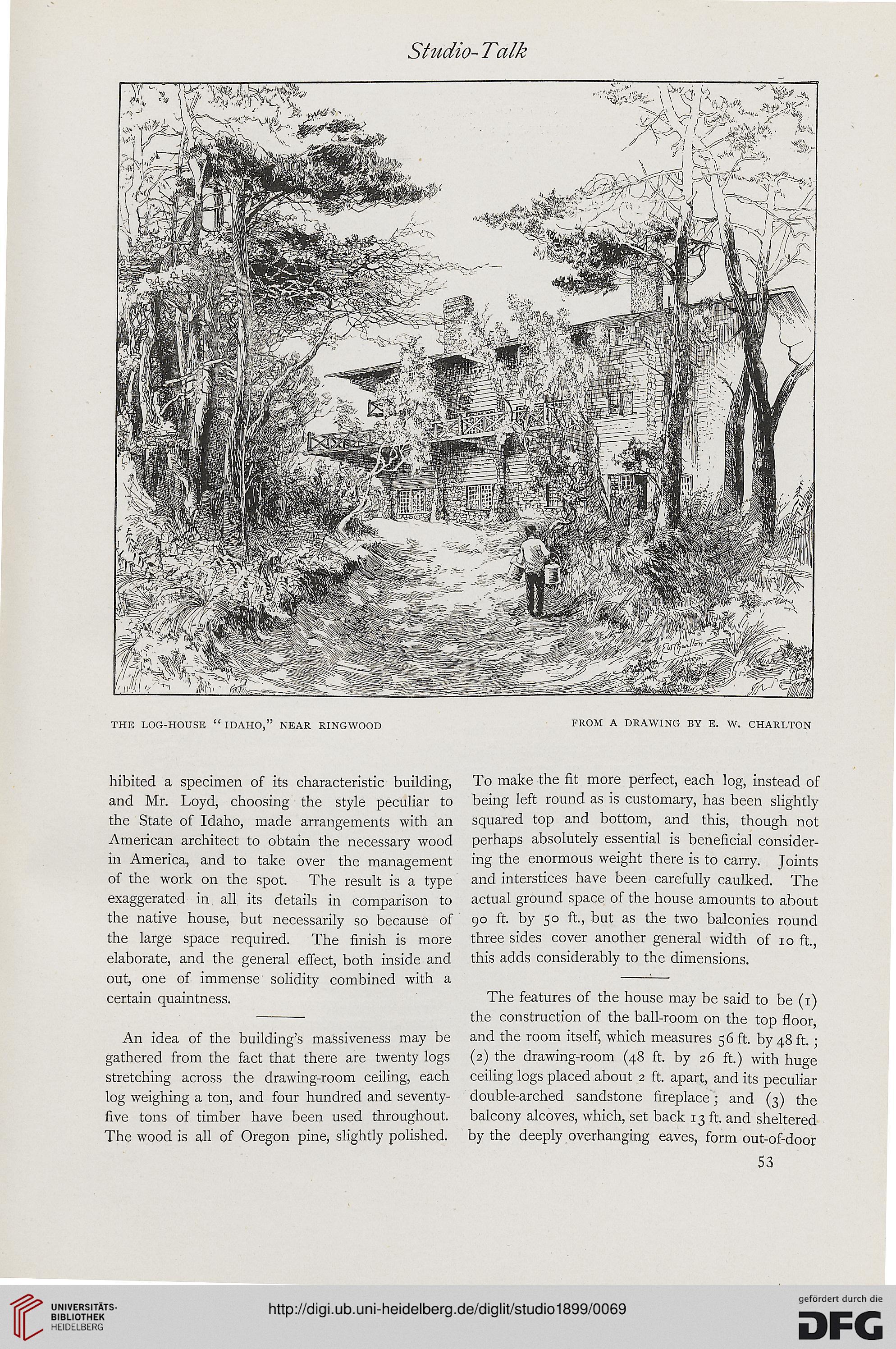Studio- Talk
hibited a specimen of its characteristic building,
and Mr. Loyd, choosing the style peculiar to
the State of Idaho, made arrangements with an
American architect to obtain the necessary wood
in America, and to take over the management
of the work on the spot. The result is a type
exaggerated in all its details in comparison to
the native house, but necessarily so because of
the large space required. The finish is more
elaborate, and the general effect, both inside and
out, one of immense solidity combined with a
certain quaintness.
An idea of the building's massiveness may be
gathered from the fact that there are twenty logs
stretching across the drawing-room ceiling, each
log weighing a ton, and four hundred and seventy-
five tons of timber have been used throughout.
The wood is all of Oregon pine, slightly polished.
To make the fit more perfect, each log, instead of
being left round as is customary, has been slightly
squared top and bottom, and this, though not
perhaps absolutely essential is beneficial consider-
ing the enormous weight there is to carry. Joints
and interstices have been carefully caulked. The
actual ground space of the house amounts to about
90 ft. by 50 ft., but as the two balconies round
three sides cover another general width of 10 ft.,
this adds considerably to the dimensions.
The features of the house may be said to be (1)
the construction of the ball-room on the top floor,
and the room itself, which measures 56 ft. by 48 ft. •
(2) the drawing-room (48 ft. by 26 ft.) with huge
ceiling logs placed about 2 ft. apart, and its peculiar
double-arched sandstone fireplace; and (3) the
balcony alcoves, which, set back 13 ft. and sheltered
by the deeply overhanging eaves, form out-of-door
53
hibited a specimen of its characteristic building,
and Mr. Loyd, choosing the style peculiar to
the State of Idaho, made arrangements with an
American architect to obtain the necessary wood
in America, and to take over the management
of the work on the spot. The result is a type
exaggerated in all its details in comparison to
the native house, but necessarily so because of
the large space required. The finish is more
elaborate, and the general effect, both inside and
out, one of immense solidity combined with a
certain quaintness.
An idea of the building's massiveness may be
gathered from the fact that there are twenty logs
stretching across the drawing-room ceiling, each
log weighing a ton, and four hundred and seventy-
five tons of timber have been used throughout.
The wood is all of Oregon pine, slightly polished.
To make the fit more perfect, each log, instead of
being left round as is customary, has been slightly
squared top and bottom, and this, though not
perhaps absolutely essential is beneficial consider-
ing the enormous weight there is to carry. Joints
and interstices have been carefully caulked. The
actual ground space of the house amounts to about
90 ft. by 50 ft., but as the two balconies round
three sides cover another general width of 10 ft.,
this adds considerably to the dimensions.
The features of the house may be said to be (1)
the construction of the ball-room on the top floor,
and the room itself, which measures 56 ft. by 48 ft. •
(2) the drawing-room (48 ft. by 26 ft.) with huge
ceiling logs placed about 2 ft. apart, and its peculiar
double-arched sandstone fireplace; and (3) the
balcony alcoves, which, set back 13 ft. and sheltered
by the deeply overhanging eaves, form out-of-door
53




